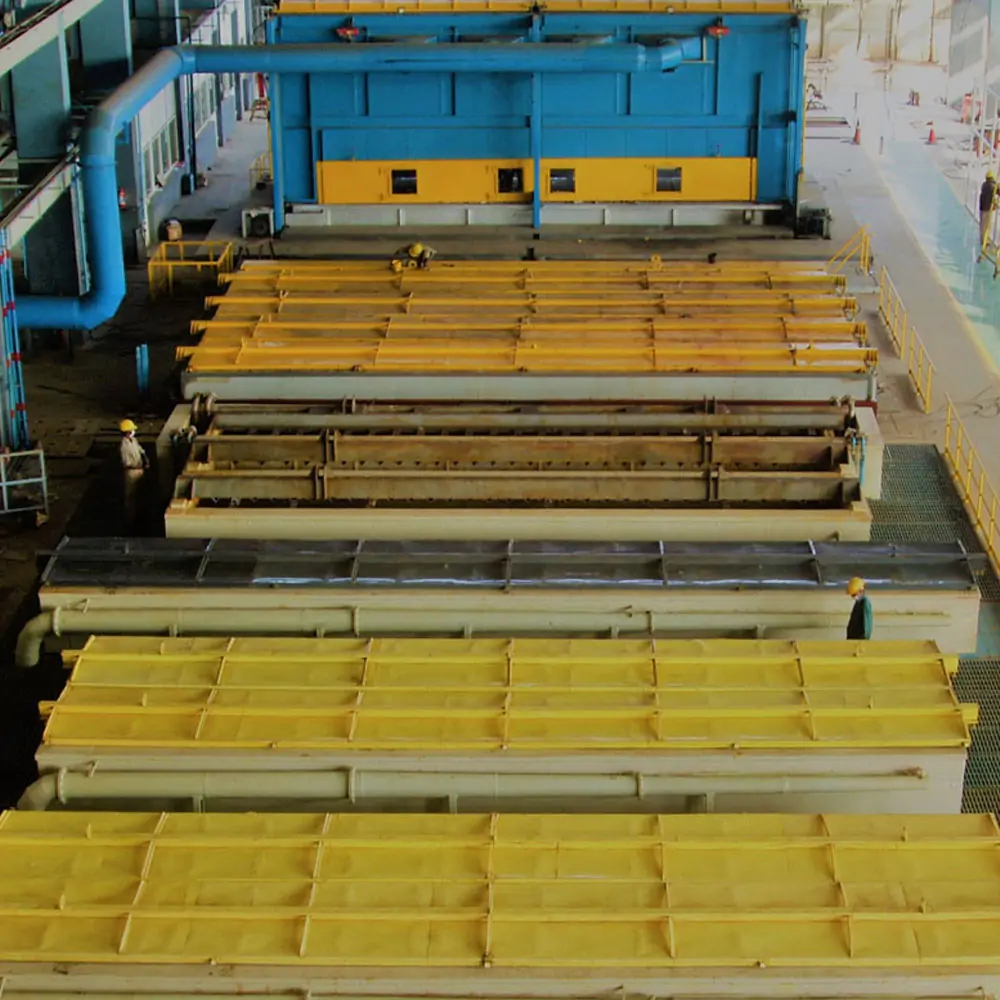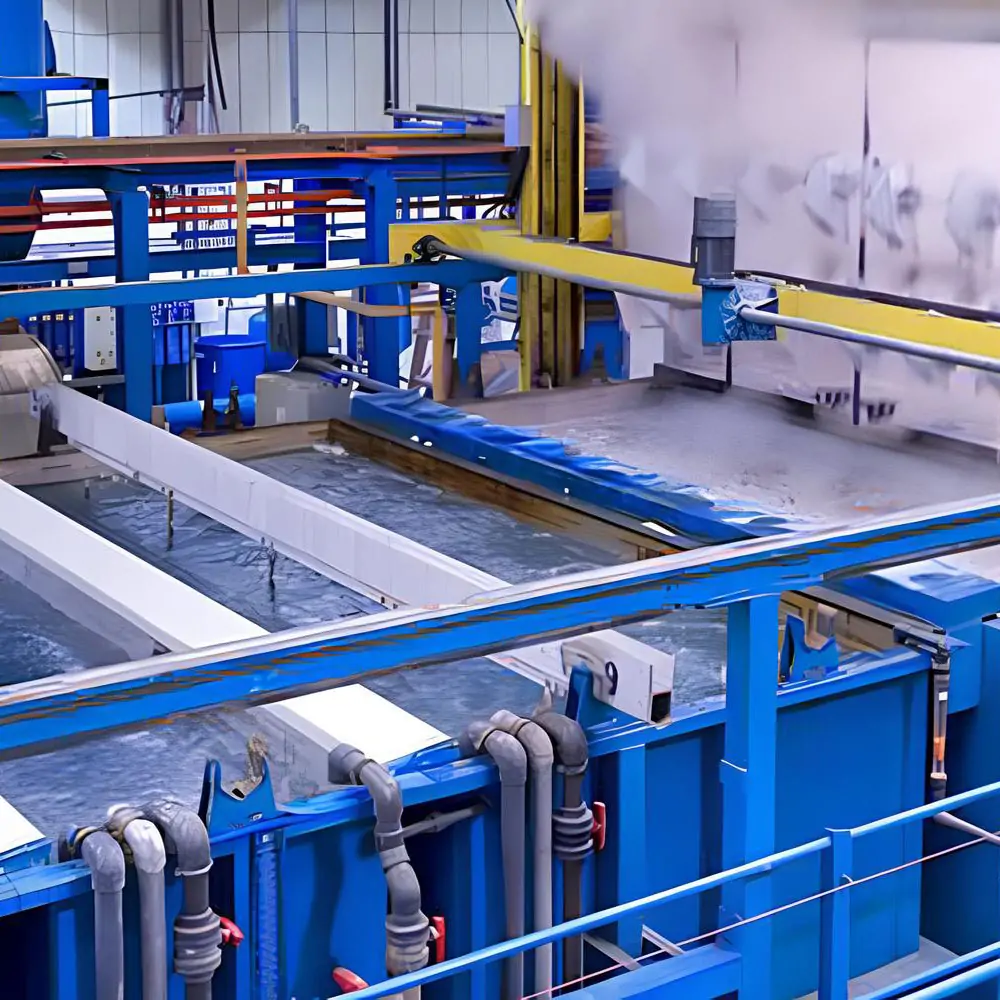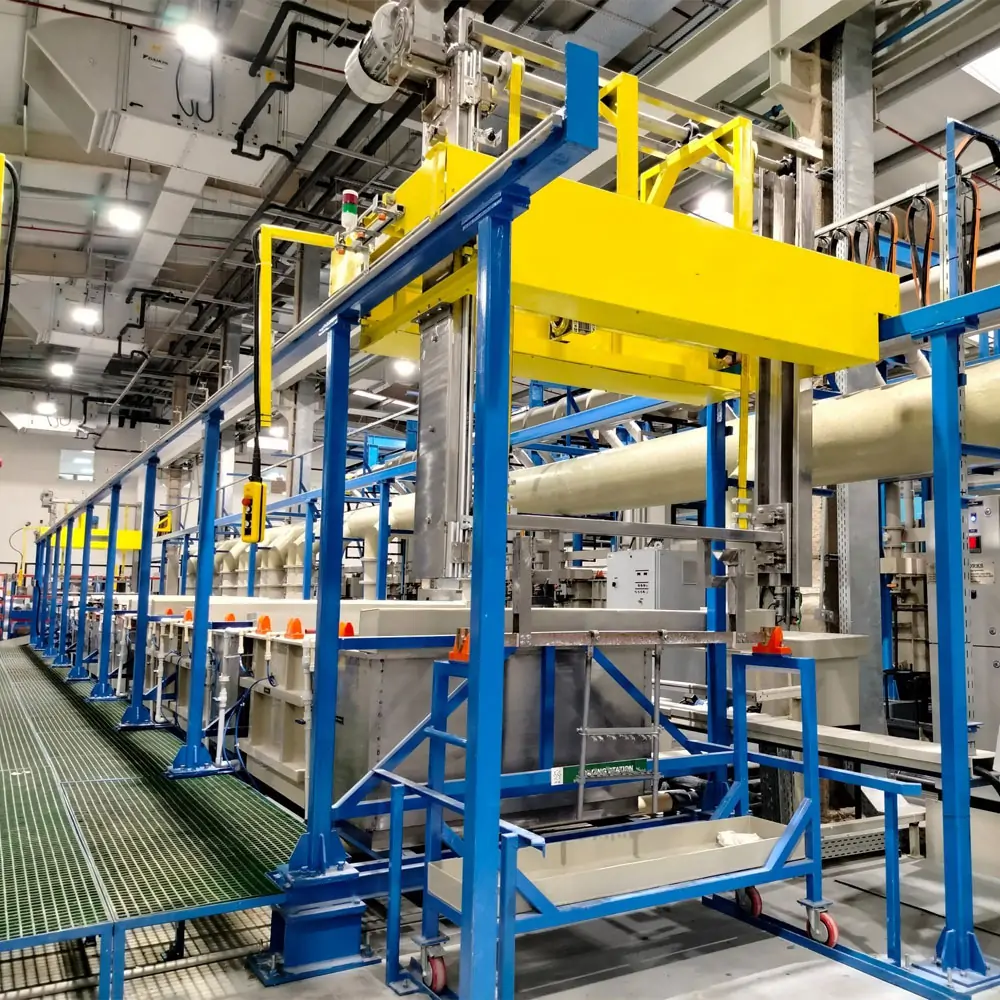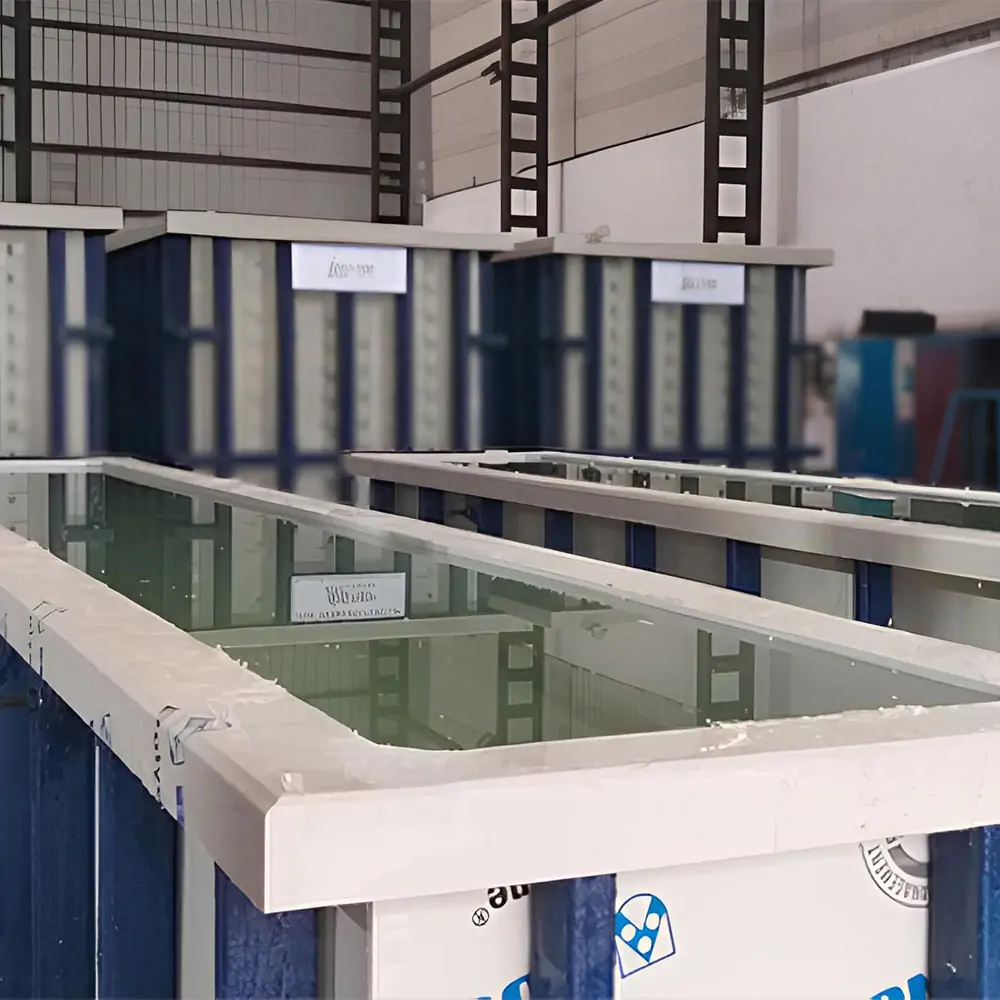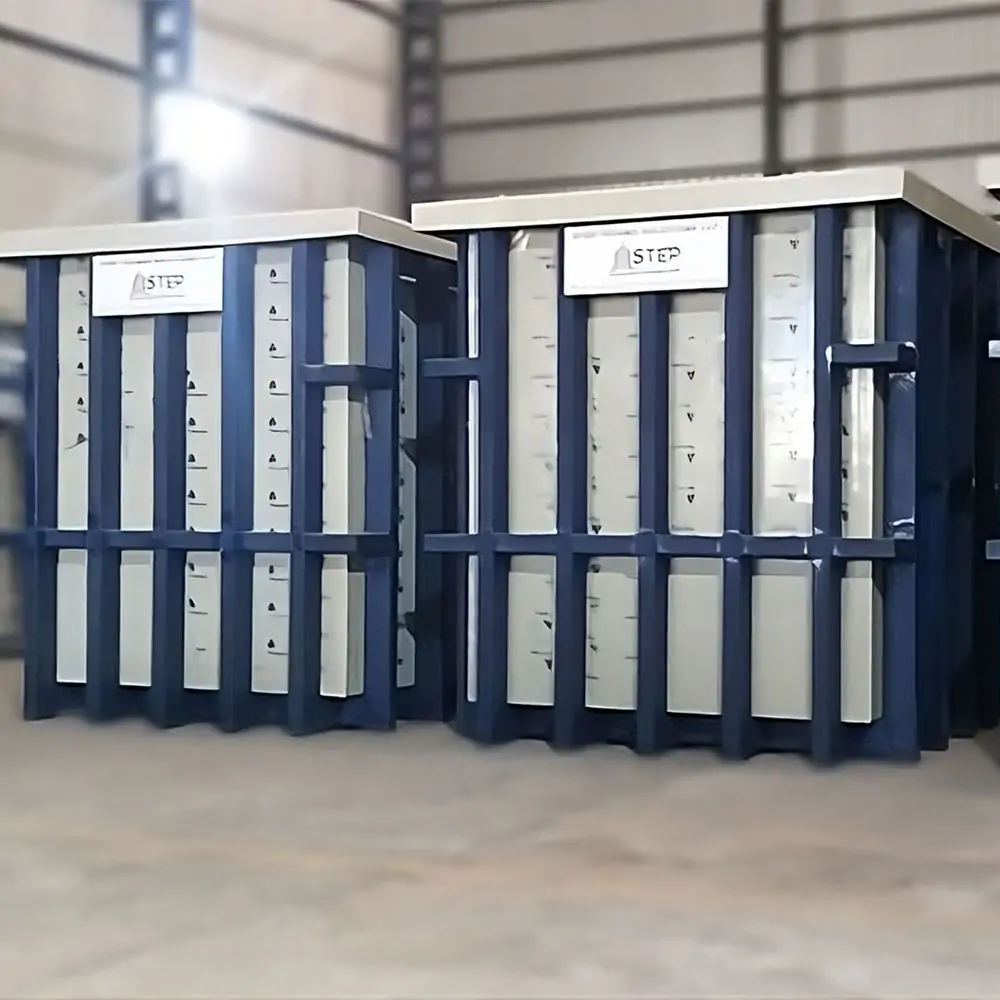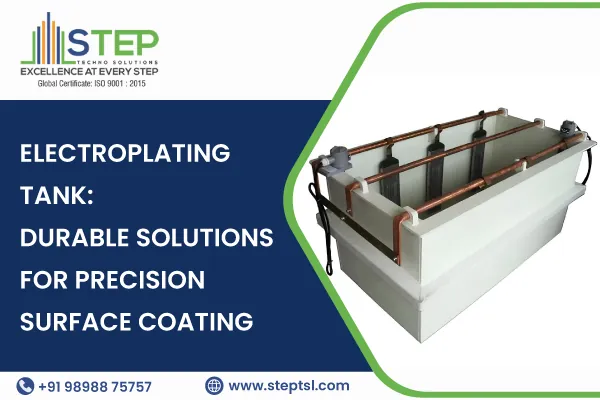In modern manufacturing, precision and durability are essential for maintaining product quality and longevity. Electroplating plays a vital role in achieving these goals by coating metals with a thin protective layer that enhances strength, shine, and corrosion resistance. At the core of this process lies the electroplating tank, a specially designed container engineered to handle chemical reactions safely and efficiently. These tanks are made from durable, corrosion-resistant materials like PP, PVC, or FRP, ensuring long-term reliability even under harsh chemical conditions. From automotive parts and electronic components to jewelry and hardware, electroplating tanks ensure a flawless finish, extended lifespan, and superior surface protection. By offering consistent results and precise control, they are indispensable in industries demanding precision surface coating and high-performance finishes.
What Is an Electroplating Tank?
An electroplating tank is a specially designed container used to hold electrolyte solutions for metal coating processes. It facilitates the deposition of a thin metal layer onto various substrates through controlled chemical and electrical reactions. These tanks are typically made from chemically resistant materials like polypropylene (PP), polyvinyl chloride (PVC), or fiberglass-reinforced plastic (FRP) to withstand corrosive acids and alkalis.
Engineered for durability, temperature control, and chemical stability, electroplating tanks ensure safe and efficient metal finishing operations in industries such as automotive, electronics, and surface treatment manufacturing.
The Electroplating Process Explained
In the electroplating process, the object to be coated (cathode) and the metal to be deposited (anode) are immersed in a conductive electrolyte solution. When an electric current passes through the solution, metal ions from the anode are deposited onto the cathode’s surface, forming a uniform metallic layer.
Common Materials Used in Electroplating
- Nickel – for corrosion resistance and smooth finish.
- Chrome – for hardness and aesthetic shine.
- Zinc – for rust protection.
- Copper – as an undercoating to improve adhesion.
- Gold and Silver – for decorative and conductive applications.
Applications of Electroplating in Different Sectors
- Automotive: Enhances the durability and corrosion resistance of engine components, trims, and decorative parts, ensuring a longer lifespan and improved visual appeal for vehicles.
- Aerospace: Strengthens precision components against wear and oxidation, improving performance reliability under extreme temperature and pressure conditions common in aircraft systems.
- Electronics: Provides superior electrical conductivity, oxidation resistance, and enhanced surface finish for circuit boards, connectors, and micro-components used in high-tech devices.
- Jewelry: Adds a protective metallic coating that enhances shine, color, and resistance to tarnishing, keeping ornaments beautiful and durable over time.
- Medical Equipment: Ensures biocompatibility and smooth surfaces for implants and surgical instruments, allowing easy sterilization and maintaining patient safety standards.
Types of Electroplating Tanks
- Rectangular Tanks: These are the most widely used tanks, ideal for batch plating operations. Their straight walls and easy accessibility make them suitable for handling various part sizes efficiently.
- Cylindrical Tanks: Designed for continuous or barrel plating processes, these tanks allow parts to tumble freely, ensuring uniform coating and minimizing plating inconsistencies on complex-shaped items.
- Agitation Tanks: Equipped with built-in air or liquid agitation systems, these tanks ensure even distribution of electrolytes, resulting in uniform plating thickness and smoother surface finishes on all components.
- Heated Tanks: These tanks come with integrated heating systems to maintain optimal solution temperatures, ensuring consistent coating quality and efficient electrochemical reactions during high-precision plating processes.
Comparison of Materials Used for Tank Construction
- Polypropylene (PP): Lightweight, corrosion-resistant, and affordable.
- PVC (Polyvinyl Chloride): Excellent for acidic solutions but less heat resistant.
- FRP (Fiber-Reinforced Plastic): Extremely durable, ideal for large setups.
- Stainless Steel (with lining): Best for high-temperature and alkaline solutions.
Selection Criteria for Choosing the Right Tank
- Nature of chemicals used
- Process temperature
- Load capacity and size
- Electrical insulation requirements
- Durability and cost
Key Features of Electroplating Tanks
- Corrosion Resistance: Electroplating tanks must resist corrosion from strong acids, alkalis, and metallic salts. High-quality polymer linings or reinforced materials help extend the tank’s lifespan even under continuous use.
- Temperature Control Capabilities: Many electroplating processes require precise temperature control. Tanks equipped with integrated heaters and thermostats ensure uniform plating and consistent coating thickness.
- Chemical Compatibility: Each electroplating process uses specific chemical compositions. Proper tank selection ensures compatibility with those chemicals to prevent contamination and damage.
Maintenance and Care for Electroplating Tanks
Routine Maintenance Practices
- Regularly inspect for cracks, leaks, or discoloration.
- Clean residue from the tank surface to maintain chemical balance.
- Ensure filters and heaters are operating correctly.
Common Issues and Troubleshooting
- Problem: Uneven coating → Solution: Adjust current density and agitation.
- Problem: Contaminated solution → Solution: Filter or replace the electrolyte.
- Problem: Corrosion or leaks → Solution: Repair or re-line the tank immediately.
Importance of Regular Inspections
Routine inspections not only prevent unexpected breakdowns but also ensure compliance with safety and environmental standards. Preventive maintenance reduces downtime and extends the tank’s operational life.
Advantages of Using High-Quality Electroplating Tanks
- Enhanced Process Efficiency: Uniform coating and reduced energy loss.
- Long-Term Durability: Resistant to corrosion, temperature, and wear.
- Safety Compliance: Meets industrial and environmental safety regulations.
- Cost-Effectiveness: Reduced maintenance and downtime.
- Customization Flexibility: Available in varied sizes and materials for specific needs.
Safety Measures During Electroplating Operations
- Use personal protective equipment (PPE) like gloves, goggles, and masks.
- Maintain proper ventilation to avoid inhalation of fumes.
- Ensure grounding and insulation of electrical equipment.
- Regularly monitor temperature and pH levels.
- Follow environmental disposal protocols for used electrolytes.
Applications of Electroplating Tanks in Industries
- Automotive Industry: Used to coat metal parts like bumpers, pistons, and tools, improving wear resistance and appearance.
- Electronics and Electricals: Ensures conductivity and prevents oxidation of connectors, circuit boards, and wires.
- Aerospace and Defense: Offers precision coating for critical parts that require strength and corrosion resistance.
- Manufacturing and Tooling: Improves the hardness and durability of machinery parts.
- Jewelry and Decorative Industries: Provides premium finishes that enhance visual appeal and longevity.
Future Trends in Electroplating Tank Technology
- Automation Integration: Smart sensors and automated systems for monitoring.
- Eco-Friendly Plating Solutions: Using non-toxic and recyclable materials.
- Energy Efficiency Improvements: Reduced energy consumption through better insulation.
- Smart Maintenance: Predictive analytics for proactive servicing.
- Modular Designs: Easier scalability for industrial expansion.
Electroplating processes involve chemicals that, if mishandled, can harm the environment. Modern electroplating tanks are now designed to minimize environmental impact by:
- Incorporating leak-proof linings.
- Facilitating closed-loop filtration systems.
- Using non-toxic materials.
- Enabling easy neutralization and recycling of chemicals.
By investing in eco-conscious electroplating systems, industries can meet sustainability goals while maintaining high production quality.
Why Choose STEP® Techno Solutions LLP?
Choose STEP® Techno Solutions LLP, the leading electroplating tanks manufacturer in India, delivering high-performance and durable tanks for precision surface coating. Our electroplating tanks are engineered using premium-grade PP, PVC, and FRP materials that ensure superior corrosion resistance, chemical compatibility, and temperature endurance. Each unit is designed and tested for efficiency, safety, and longevity, making it ideal for demanding industrial applications. We specialize in providing complete solutions — from design consultation and fabrication to installation and maintenance — ensuring seamless integration with your production setup. Whether for automotive, electronics, or surface treatment industries, our tanks enhance productivity and quality control.
With a focus on innovation, customization, and client satisfaction, we deliver electroplating tanks that meet the highest international standards. For reliable electroplating tanks in India, contact STEP® Techno Solutions LLP today and experience unmatched performance and support for your business.
Conclusion
Electroplating tanks are the backbone of precision surface coating operations across multiple industries. Their strength, resistance, and design flexibility directly impact the quality, consistency, and efficiency of the electroplating process. Investing in a durable, well-engineered tank not only enhances productivity but also ensures environmental safety and cost savings in the long term. For businesses seeking dependable, high-performance solutions, it’s crucial to partner with trusted experts in the field.
Contact STEP® Techno Solutions LLP today at +91 98988 75757 or info@steptsl.com to learn more about our durable and advanced electroplating tanks designed for precision surface coating excellence.
FAQ
1. What is an electroplating tank, and why is it important?
An electroplating tank is a specially designed container used to deposit metal coatings on components using chemical and electrical processes. It ensures precision surface finishing, corrosion protection, and enhanced durability, making it essential for industries like automotive, electronics, and manufacturing.
2. Which industries commonly use electroplating tanks?
Electroplating tanks are widely used in industries such as automotive, aerospace, jewelry, electrical, electronics, and heavy machinery. They help achieve consistent coatings for the protection, appearance, and performance of components exposed to environmental and mechanical stress.
3. What materials are electroplating tanks made from?
High-quality tanks are constructed from corrosion-resistant materials like Polypropylene (PP), PVC, and FRP. These materials provide chemical stability, temperature resistance, and long service life, ensuring safety and efficiency during electroplating operations.
4. How does an electroplating tank work?
The tank holds an electrolyte solution containing metal ions. When an electric current passes through, the ions deposit onto the surface of the object (cathode), forming a uniform metallic coating with improved appearance and protection.
5. What are the key features of a good electroplating tank?
A reliable electroplating tank offers excellent corrosion resistance, chemical compatibility, temperature control, and mechanical strength. It should be leak-proof, easy to clean, and customizable according to specific process requirements.
6. How often should electroplating tanks be maintained?
Regular maintenance, including cleaning, inspection for leaks, and checking temperature and electrical systems, should be performed monthly. Proper upkeep ensures consistent coating quality, reduces downtime, and extends tank life.
7. What factors should be considered when selecting an electroplating tank?
Consider the type of chemicals used, temperature requirements, tank size, load capacity, and material compatibility. Customization options for automation and heating systems can further optimize the electroplating process.
8. Are electroplating tanks environmentally friendly?
Modern electroplating tanks are designed with eco-friendly materials and leak-proof linings. They also support closed-loop systems to minimize chemical waste and reduce environmental impact during coating operations.
9. What are the most common issues faced in electroplating tanks?
Common issues include corrosion, uneven plating, and contamination of the electrolyte solution. These can be prevented with proper filtration, temperature monitoring, and routine tank inspections.
10. Why should I choose STEP® Techno Solutions LLP for electroplating tanks?
STEP® Techno Solutions LLP provides high-quality, durable electroplating tanks made from advanced materials like PP and FRP. With precision engineering, corrosion resistance, and complete installation support, the company ensures long-lasting performance and reliability for all industrial coating applications.

